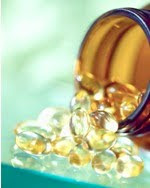 One of the best Christmas gifts I received last year was a Cuisinart popcorn popper. Nearly every Sunday night I pop a big potful. I love popcorn!
One of the best Christmas gifts I received last year was a Cuisinart popcorn popper. Nearly every Sunday night I pop a big potful. I love popcorn!Popcorn is also a terrific snack for a party! Here is a great microwave recipe for caramel corn from Confident Choices: A Cookbook for IC and OAB.
Amy’s Microwave Caramel Corn
Ingredients
- · 1 c. brown sugar
- · 1/2 c. butter
- · 1/4 c. white corn syrup
- · 1/2 t. salt
- · 1/2 t. baking soda
- · 3 qt. popped corn
- · 2 large grocery bags (put one inside the other)
Combine brown sugar, butter, syrup, and salt in a 4-cup microwave-safe container. Cook for 2 minutes on high. After mixture comes to a rolling boil, add baking soda and stir well.
Place popcorn in doubled bag and pour the sugar/butter mixture over it. Fold the edge of the bag to close and return to the microwave. Cook on high for 1-1/2 minutes. Remove and shake well. Return to the microwave for another 1/2 minute. Remove, shake, and eat!
Author, Speaker, Patient Advocate
 Just Tell Me What to Eat!
Just Tell Me What to Eat!
For step by step guidance for creating your own personal interstitial cystitis meal plan, see: Confident Choices®: Customizing the Interstitial Cystitis Diet.
For some basic, family-style, IC bladder-friendly recipes, see: Confident Choices®: A Cookbook for Interstitial Cystitis and Overactive Bladder
For health care workers: Interstitial Cystitis: A Guide for Nutrition Educators **Please SHARE using the links below!**


